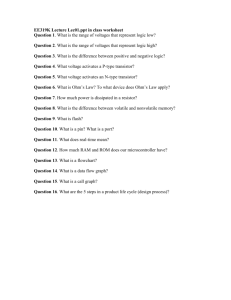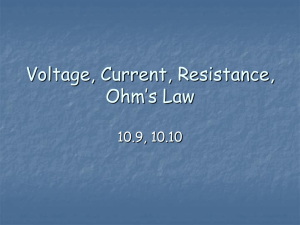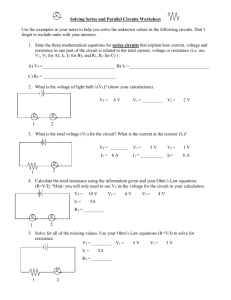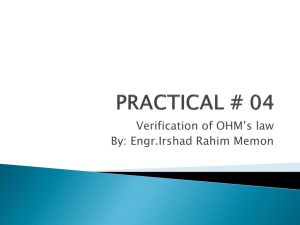Lab Report Rubric *What You Should Know
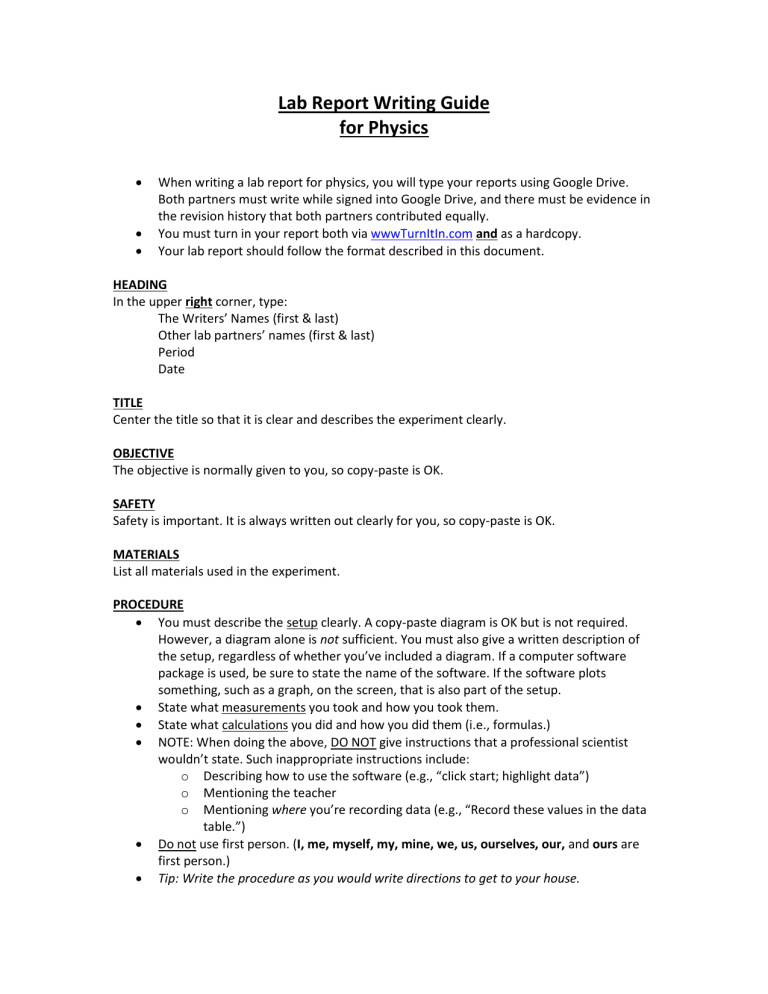
Lab Report Writing Guide for Physics
When writing a lab report for physics, you will type your reports using Google Drive.
Both partners must write while signed into Google Drive, and there must be evidence in the revision history that both partners contributed equally.
You must turn in your report both via wwwTurnItIn.com
and as a hardcopy.
Your lab report should follow the format described in this document.
HEADING
In the upper right corner, type:
The Writers’ Names (first & last)
Other lab partners’ names (first & last)
Period
Date
TITLE
Center the title so that it is clear and describes the experiment clearly.
OBJECTIVE
The objective is normally given to you, so copy-paste is OK.
SAFETY
Safety is important. It is always written out clearly for you, so copy-paste is OK.
MATERIALS
List all materials used in the experiment.
PROCEDURE
You must describe the setup clearly. A copy-paste diagram is OK but is not required.
However, a diagram alone is not sufficient. You must also give a written description of the setup, regardless of whether you’ve included a diagram. If a computer software package is used, be sure to state the name of the software. If the software plots something, such as a graph, on the screen, that is also part of the setup.
State what measurements you took and how you took them.
State what calculations you did and how you did them (i.e., formulas.)
NOTE: When doing the above, DO NOT give instructions that a professional scientist wouldn’t state. Such inappropriate instructions include: o Describing how to use the software (e.g., “click start; highlight data”) o Mentioning the teacher o Mentioning where you’re recording data (e.g., “Record these values in the data table.”)
Do not use first person. (I, me, myself, my, mine, we, us, ourselves, our, and ours are first person.)
Tip: Write the procedure as you would write directions to get to your house.
Example: Set up a circuit with one 100 Ohm resistor and a voltage source. Set the voltage source to 0.5V. Insert the ammeter and use the PASCO system to collect data via a Current v. Time graph. Every 2.0 seconds increase the voltage by 0.5V for 10.0 seconds.
For each 2.0 second time interval measure the average current. Use Ohm’s Law to calculate the resistance for each time interval. Compare the accuracy of the average of
these values to the actual resistance calculating percent error.
DATA TABLES AND GRAPHS
This is where you will present your recorded data.
It must be neat and well organized. Data tables must be entered via a spreadsheet program (such as Excel) and cut-and-pasted into the lab report. o All data tables must indicate the variables measured. o All data tables must indicate with the units of measurement for each variable. o All data tables must be appropriately precise.
In Excel, you can specify the precision by highlighting your data table.
Then go to the “Home” tab and look at the top of your screen. (left image, below)
In the “Number” box, you can click one of the two icons circled below to increase or decrease the decimal to the appropriate amount of precision.
Sometimes a screenshot of a graph is required. You can export an image of a PASCO graph and then insert it in your lab report when needed.
DATA ANALYSIS
All your mathematical calculations should be labeled and organized in this section if required. (The lab will indicate if you need to do this.)
Use units for everything, not just the final values.
In some labs you will look at percent error in addition to your other calculations. The percent error can be determined when the experimental value is compared to the actual value according to the equation below:
(Experimental Value - Actual Value)
Percent Error ={ --------------------------------------------------} x 100%
Actual Value
Please note that a negative percent error does not mean that the error was less than zero, which would be impossible, or that you did the calculation wrong. It shows that the student's experimental value was actually lower than the actual value.
CONCLUSION
In a conclusion you will summarize the results (data) of the lab and (most importantly) what they allow the experimenter (you) to conclude about the objectives of the lab. Some tips:
Address each objective one at a time and write… o what you can conclude and o what evidence from your results supports that conclusion.
Note: Do not restate all of your numbers. Instead refer to trends and, perhaps, give a small sample of numbers that represent the trends. (See the example, below.)
This is not the conclusion to an essay. Do not describe what you did or what this lab was
about. That information is already in your objectives and your procedure and should not be repeated.
What if you know your results are wrong? Draw your conclusions based on the results
anyway, regardless of whether they’re right or wrong. If you know they’re wrong, though, you must say so. (Otherwise the reader (your teacher) will think you didn’t realize that there was an error and will mark points off.)
Never, never, never write in first person in a conclusion.
Do not comment about how great/interesting/successful/awesome this lab was.
Scientists don’t care if you liked doing a lab or learned a lot.
To make your conclusion truly exceptional, relate your conclusion to larger themes in science and/or technology. (See italics in the sample below.)
For example:
1.
CORRECT: When Car 1 collided with Car 2, Car 1’s mass decreased. However, Car
2’s mass increased by almost the same amount, varying only by -0.001kg.
Because this is an insignificant change in mass, it is clear that mass transferred from Car 1 to Car 2 and was conserved between the two cars. This is consistent
with the Law of Conservation of Mass.
2.
INCORRECT: In this experiment we learned a lot about electricity.
1 We set up a circuit with a voltage source and one 100 Ohm resistor. We changed the voltage
1 Don’t tell the story of the lab. Just conclude. Also, don’t write in first person.
and measured its effect on the current.
2 We found that as voltage increases, the current in a circuit increases when the resistance is constant.
3 This can be seen because (restatement of lots of numbers.) 4 Overall this was a helpful lab.
5
COMMENTS
Now you can… o tell the story of the lab, and/or o comment about what you learned, and/or o comment about how much enjoyed the experience (but be academic about it and back your joy up with facts,) and/or o talk about what error may have occurred, and/or o give suggestions for future changes to the lab, and you should… o write in first person!
6
Do not write something that has no academic substance, such as, “We really enjoyed this lab,” or “We had fun doing this lab,” or “We learned a lot by doing this lab.”
Comments must have academic substance. For example, “We really enjoyed seeing the relationship between how much frosting we put on the cupcake and how large of a splatter the cupcake made when hurled at a target” describes what you enjoyed academically about the lab.
You must write at least two sentences.
Final style note: Don’t put a heading at the bottom of the page if the section itself doesn’t appear until the next page. Keep the heading with the beginning of the section.
2 This sentence, again, tells the ‘story’ of the lab, which is not the same as CONCLUDING. Anyone who’s read your lab report already knows what you did, so don’t repeat it. Oh, and don’t write in first person!
3 Good, but where’s the data to back up this conclusion? Oh, and don’t write in first person.
4 OMG don’t restate all of the numbers from your data section. It’s already in your data section and doesn’t need a revisiting. Find a trend and refer to that trend.
5 Scientists don’t care if you liked the experiment, so don’t write about that in a conclusion. At least you didn’t write this sentence in first person, though!
6 At last!


